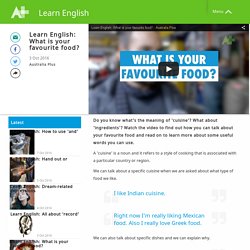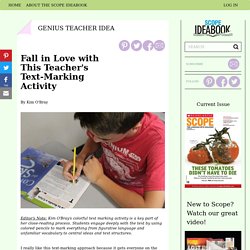

International House Bristol. All Things Topics - Home. Ba Ba Dum. English Online - Articles in Easy Understandable English for Learners. Grammar. Idioms and phrases related to eating – About Words – Cambridge Dictionaries Online blog. By Kate Woodford It is sometimes said that the next best thing to eating food is talking about food.

If this is true, we need the vocabulary with which to do it! In this post, we focus on idioms, phrasal verbs and other phrases that we use to talk about eating. As you might imagine, many of the more colourful phrases in English relate to eating a lot. Someone who has eaten too much may say informally that they have made a pig of themselves: I made a real pig of myself at lunch. A person who has had people staying in their home may say humorously that the visitors have eaten them out out of house and home, meaning that they have eaten all their food: My grandchildren came to stay for the week and ate me out of house and home! Someone who regularly eats a lot may be said to eat like a horse: He’s incredibly thin and yet he eats like a horse. A number of phrasal verbs describe the way we eat or how much we eat.
She’s very slim but she can really pack it away (=she eats a lot) Learn English: What is your favourite food? - Learn English - Australia Plus. Do you know what's the meaning of 'cuisine'?

What about 'ingredients'? Watch the video to find out how you can talk about your favourite food and read on to learn more about some useful words you can use. A 'cuisine' is a noun and it refers to a style of cooking that is associated with a particular country or region. We can talk about a specific cuisine when we are asked about what type of food we like. Right now I'm really liking Mexican food. We can also talk about specific dishes and we can explain why. I like mum's cooking because it's delicious. Teaching for Success online conference: 5 - 9 October 2016. Fall in Love with This Teacher’s Text-Marking Activity. Editor’s Note: Kim O’Bray’s colorful text marking activity is a key part of her close-reading process.

Students engage deeply with the text by using colored pencils to mark everything from figurative language and unfamiliar vocabulary to central ideas and text structures. I really like this text-marking approach because it gets everyone on the same page and encourages students to ask questions and make their own connections. It works wonderfully with any nonfiction text. At the beginning of the year, I model each step for my students, especially for my 6th graders who are new to text-marking. By the time my students are in 8th grade, the process has become second nature. What you’ll need: Any Scope nonfiction article. Key skills:finding text evidence, central ideas, text structure, figurative language, vocabulary, synthesizing, summarizing Time:Three, 45-minute class periods Day 1: Preview and summarize Set a purpose for reading. Day 2: Text mark and discuss. 4. Habits. Interesting Things for ESL/EFL Students (Fun English Study)
Thematic vocabulary - Birthday. In the issue 105 of English Teaching Professional there is a wonderful article by Chris Payne.

It is called Plan V and it deals with vocabulary teaching. Chris explains that teachers should teach vocabulary every lesson, they should teach high frequency words and they should not teach semantic sets. He supports his arguments with research and the whole text is really worth reading. For me, the most important idea to teach thematic sets instead of semantic sets. Research shows that it takes much longer to learn words in semantic sets than it takes to learn unrelated vocabulary items. What is the difference between a semantic and thematic set? However, if you start to search the internet, you will find that these thematic sets are very difficult to find. All the words in the Birthday set were chosen in the following way.
Under the mind map you can find example sentences. On the second page, there are two exercises for the students to practise the vocabulary. English Second Language. EDUNEWS.PL - portal o nowoczesnej edukacji - Zintegrowane kształcenie przedmiotowo-językowe - CLIL. „Zintegrowane kształcenie przedmiotowo-językowe stanowi innowacyjne podejście metodyczne o znacznie szerszym zakresie niż samo nauczanie języków obcych.

Jego zwolennicy podkreślają, że ma ono umożliwić biegłe opanowanie zarówno danego pozajęzykowego przedmiotu, jak i języka, w którym naucza się tego przedmiotu, przy czym do każdego z tych elementów przywiązuje się taką samą wagę” – czytamy w publikacji Eurydice poświęconej CLIL i wydanej po polsku w 2007 r. przez FRSE. A jak do tego podejść praktycznie? Dostosowałem wymagania edukacyjne stawiane uczniom i uczennicom, z którymi współpracuję: Przeanalizowałem podstawę programową: szkoła oraz poszczególni nauczyciele podejmują działania mające na celu zindywidualizowane wspomaganie rozwoju każdego ucznia, stosownie do jego potrzeb i możliwości.
Celem kształcenia ogólnego na III i IV etapie edukacyjnym jest (podkreślenia własne): 1) przyswojenie przez uczniów określonego zasobu wiadomości na temat faktów, zasad, teorii i praktyk; Realizacja Cele. BusyTeacher.org.